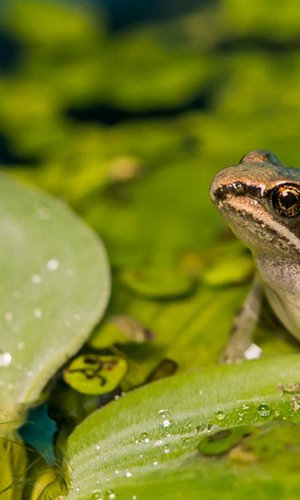When we think of pollination, we usually think of a bee going from flower to flower in search of nectar and at the same time carrying pollen that remains attached to its body. It is well known that pollinators include not only insects, but also vertebrates such as birds, small mammals and some reptiles. Until now, amphibians have been excluded from this group, as almost all species are carnivorous (mostly insectivorous) after metamorphosis. However, one species has caught the attention of a group of scientists from the Amphibians Natural History Lab at the University of Campinas, Brazil: it is a small orange frog whose scientific name is Xenohyla truncata and whose diet is based on fruit. Recent observations of the behaviour of this tree frog have shown unexpected interactions with plants in their native range. Xenohyla truncata, in fact, seems to be fond of the nectar of Chrysophyllum cainito: like a sucker it attracts fruits, flowers and nectar to feed on, and pollen grains remain attached to its back. This led the team of scientists to speculate 'with high probability' that the species aids the pollination of C. cainito trees. Xenohyla truncata may therefore be the first amphibian species to be identified as a pollinator. The conditional tense must be used for the moment because scientists have yet to confirm that the frog's behaviour actually promotes pollination. The interaction between pollen and the mucus secreted by the frog's skin also remains to be investigated, in order to understand whether the former remains 'fertile' during transport, as well as why this particular species has developed such a (seemingly) pronounced fondness for nectar. This will not be easy, not least because both X. truncata and C. cainito are endangered species.




